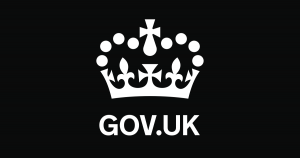This blog looks into the importance of continued stakeholder engagement throughout the life cycle of your project or programme along with some good examples of how you can identify and engage effectively with each individual.
Author: Robert Orford Consultant with i3Works
Stakeholder engagement is at the very core of what we do as project managers, without it much of what we do will fall apart because we all recognise that no project can exist solely within the sphere of one individual. We all have stakeholders, be that the project team, employee’s and CEO on a large scale corporate change programme or your family, neighbours and the landscaping firm during a complete landscaping project in your back garden. While we all appreciate that we have stakeholders, we often find that someone isn’t happy with the way things are going or doesn’t like the end result of the project. This can sometimes simply be explained by this person being difficult or generally negative but more often than not it’s due to the fact we haven’t engaged with them properly. So how can we mitigate this risk?
Ben Pincher of Oxford Major Programmes explains that the main obstacle we face with stakeholder engagement is consistency. Stakeholder engagement is mainly focused upon during the planning phase of a project or programme; Ben argues that for stakeholder engagement to be successful we need to continually and regularly assess each of our stakeholders.
When trying to understand our stakeholders we often focus on ‘what’ people are interested in and ‘how’ it impacts them whereas it’s crucial to focus on the ‘why’. This can also be said for how you explain your project to stakeholders, always try to focus on the ‘why’. If we look at these three types of dialogue as a series of circles we can see how best to utilise them and get the best reaction from stakeholders. Let’s use Apple as an example in what’s called the ‘Golden Circle’. This can be seen in the picture for this blog post and is composed of:
- The ‘What’ – We just happen to make great computers. Want to buy one?
- The ‘Why’ – Everything we do, we believe in challenging the status quo, we believe in thinking differently.
- The ‘How’ – We make products that are beautifully designed and user friendly
Apple use this very effectively in their advertising, talking about why a product will change your life and why you should have it but by the end of advert after getting really excited you realise all they’re talking about is a portable music player or a laptop computer. This is the effect the ‘why’ has on people and hence is the key to the golden circle. It’s been proven in studies that the emotional part of our brains responds best to this type of dialogue.
At the start of stakeholder engagement, you will need to identify who all the stakeholders are; the key questions to ask are:
- Who is affected?
- Who are the voiceless?
- Who is responsible for what is being produced?
- Who mobilises for or against what is intended?
Once you have identified who the stakeholders are the next step would be to put them onto a power vs. interest map which then informs how communication is planned. See here for an example of this. Another way to map stakeholders would be in the diagram found here (See research done by Mitchell, Agile and Wood for more info).
Having the 8 areas can allow for better planning when engaging with Stakeholders. We have to remember however that positions within this model can be fluid as things change.
Commitment Curve
A way to keep on top of where you would like your stakeholders to be at certain points in time would be to use the commitment curve (see here). This can be used to help build the communications plan. Doing a backward pass from the date that you require stakeholders to be at the correct stages allows for planning your engagements correctly.
References


